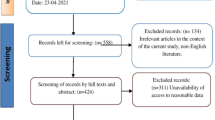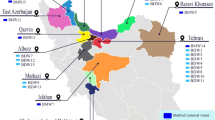Abstract
Prostate cancer is the most common fatal cancers in men, and exposure to toxic elements is the most important factor in the aetiology for prostate cancer. Selected elements (Cd, Cr, Cu, Fe, Mn, Ni, Pb and Zn) were analyzed in the blood, scalp hair and nails of prostate cancer patients and counterpart healthy donors by atomic absorption spectrometry. Average concentrations of Cd, Mn, Ni and Pb were found to be significantly higher (p < 0.05) in the blood, scalp hair and nails of the patients compared with those of the healthy subjects who exhibited significantly higher concentrations of Zn. The correlation study revealed significantly diverse relationships of the elements in the blood, scalp hair and nails of the two donor groups. Variations in the elemental concentrations were also noted for various types of prostate cancer (adenocarcinoma, squamous cell carcinoma, transitional cell carcinoma and small cell carcinoma), as well as for different stages of the cancer. Multivariate apportionment of trace elements in the blood, scalp hair and nails of the patients was also significantly different than that in the healthy donors. The study evidenced considerably divergent variations in the elemental concentrations in prostate cancer patients in comparison with healthy subjects.



Similar content being viewed by others
References
Tan C, Chen H (2011) Screening of prostate cancer by analyzing trace elements in hair and chemometrics. Biol Trace Elem Res 144:97–108
Zaichick V, Nosenko S, Moskvina I (2012) The effect of age on 12 chemical element contents in the intact prostate of adult men investigated by inductively coupled plasma atomic emission spectrometry. Biol Trace Elem Res 147:49–58
Bracarda S, de Cobelli O, Greco C, Prayer-Galetti T, Valdagni R, Gatta G, de Braud F, Bartsch G (2005) Cancer of the prostate. Crit Rev Oncol Hematol 56:379–396
Guo JK, Deng W, Zhang L, Li C, Wu P, Mao P (2007) Prediction of prostate cancer using hair trace element concentration and support vector machine method. Biol Trace Elem Res 116:257–271
Zaichick S, Zaichick V, Nosenko S, Moskvina I (2012) Mass fractions of 52 trace elements and zinc/trace element content ratios in intact human prostates investigated by inductively coupled plasma mass spectrometry. Biol Trace Elem Res 149:171–183
Pasha Q, Malik SA, Shaheen N, Shah MH (2010) Investigation of trace metals in the blood plasma and scalp hair of gastrointestinal cancer patients in comparison with controls. Clin Chim Acta 411:531–539
Rodrigues JL, Batista BL, Nunes JA, Passos CJS, Barbosa F Jr (2008) Evaluation of the use of human hair for biomonitoring the deficiency of essential and exposure to toxic elements. Sci Total Environ 405:370–376
Schiffer E (2007) Biomarkers for prostate cancer. World J Urol 25:557–562
Polkowska Z, Kozlowska K, Namiesnik J, Przyjazny A (2004) Biological fluids as a source of information on the exposure of man to environmental agents. Crit Rev Anal Chem 34:105–119
Przybylowicz A, Chesy P, Herman M, Parczewski A, Walas S, Piekoszewski W (2012) Examination of distribution of trace elements in hair, fingernails and toenails as alternative biological materials. Application of chemometric methods. Cent Eur J Chem 10:1590–1599
Rodushkin I, Axelsson MD (2000) Application of double focusing sector field ICP-MS for multielemental characterization of human hair and nails. Part II. A study of the inhabitants of northern Sweden. Sci Total Environ 262:21–36
Guzel S, Kiziler L, Aydemir B, Alici B, Ataus S, Aksu A, Durak H (2012) Association of Pb, Cd, and Se concentrations and oxidative damage-related markers in different grades of prostate carcinoma. Biol Trace Elem Res 145:23–32
Gray MA, Centeno JA, Slaney DP, Ejnik JW, Todorov T, Nacey JN (2005) Environmental exposure to trace elements and prostate cancer in three New Zealand ethnic groups. Int J Environ Res Public Health 2:374–384
Silvera SAN, Rohan TE (2007) Trace elements and cancer risk: a review of the epidemiologic evidence. Cancer Causes Control 18:7–27
Yaman M, Atici D, Bakırdere S, Akdeniz I (2005) Comparison of trace metal concentrations in malign and benign human prostate. J Med Chem 48:630–634
Wu CC, Pu YS, Wu HC, Yang CY, Chen YC (2011) Reversed association between levels of prostate specific antigen and levels of blood cadmium and urinary cadmium. Chemosphere 83:1188–1191
Were FH, Njue W, Murungi J, Wanjau R (2008) Use of human nails as bio-indicators of heavy metals environmental exposure among school age children in Kenya. Sci Total Environ 393:376–384
Moses MF, Prabakaran JJ (2011) Evaluation of occupational exposure to toxic metals using fingernails as biological indicators. Res J Environ Toxicol 5:65–70
StatSoft (1999) STATISTICA for Windows, computer program manual. StatSoft, Tulsa
Jobson JD (1991) Applied multivariate data analysis. Springer, New York
Jomova K, Valko M (2011) Advances in metal-induced oxidative stress and human disease. Toxicology 283:65–87
Khandrika L, Kumar B, Koul S, Maroni P, Koul HK (2009) Role of oxidative stress in prostate cancer. Cancer Lett 282(2):125–136
Kumar B, Koul S, Khandrika L, Meacham RB, Koul HK (2008) Oxidative stress is inherent in prostate cancer cells and is required for aggressive phenotype. Cancer Res 68:1777–1785
Mulware SJ (2013) Trace elements and carcinogenicity: a subject in review. 3. Biotech 3:85–96
Henkler F, Brinkmann J, Luch A (2010) The role of oxidative stress in carcinogenesis induced by metals and xenobiotics. Cancers 2:376–396
Rahman K (2007) Studies on free radicals, antioxidants and co-factors. Clin Interv Aging 2:219–236
Dizdaroglu M, Jaruga P, Birincioglu M, Rodriguez H (2002) Free-radical-induced damage to DNA: mechanisms and measurement. Free Rad Bio Med 32:1102–1115
Brys M, Nawrocka AD, Miekod E, Zydek C, Foksinski M, Barecki A, Krajewska WM (1997) Zinc and cadmium analysis in human prostate neoplasms. Biol Trace Elem Res 59:145–152
Chen YC, Pu YS, Wu HC, Wu TT, Lai MK, Yang CY, Sung FC (2009) Cadmium burden and the risk and phenotype of prostate cancer. BMC Cancer 9:429
West DW, Slattery ML, Robison LM, French TK, Mahoney AW (1991) Adult dietary intake and prostate cancer risk in Utah: a case–control study with special emphasis on aggressive tumors. Cancer Causes Control 2:85–94
Armstrong BG, Kazantzis G (1985) Prostatic cancer and chronic respiratory and renal disease in British cadmium workers: a case–control study. Br J Ind Med 42:540–545
Platz EA, Helzlsouer KJ, Hoffman SC, Morris JS, Baskett CK, Comstock GW (2002) Prediagnostic toenail cadmium and zinc and subsequent prostate cancer risk. Prostate 52:288–296
Kazantzis G, Lam TH, Sullivan KR (1988) Mortality of cadmium-exposed workers. Scand J Work Environ Health 14:220–223
Sorahan T, Watherhouse JAH (1983) Mortality study of nickel–cadmium battery workers by the method of regression models in life tables. Br J Ind Med 40:293–300
Vinceti M, Venturelli M, Sighinolfi C, Trerotoli P, Bonvicini F, Ferrari A, Bianchi G, Serio G, Bergomi M, Vivoli G (2007) Case–control study of toenail cadmium and prostate cancer risk in Italy. Sci Total Environ 373:77–81
Salnikow K, Zhitkovich A (2008) Genetic and epigenetic mechanisms in metal carcinogenesis and cocarcinogenesis: nickel, arsenic, and chromium. Chem Res Toxicol 21:28–44
IARC (1990) Chromium, nickel and welding. In: IARC monographs on the evaluation of carcinogenic risks to humans, nickel and nickel compounds, vol 49. World Health Organization – International Agency for Research on Cancer, Lyon
Boffetta P (1993) Carcinogenicity of trace elements with reference to evaluations made by the International Agency Research on cancer. Scand J Work Environ Health 19:67–70
Ozmen H, Erulas FA, Karatas F, Cukurovali A, Yalcin O (2006) Comparison of the concentration of trace metals (Ni, Zn, Co, Cu and Se), Fe, vitamins A, C and E, and lipid peroxidation in patients with prostate cancer. Clin Chem Lab Med 44:175–179
Guntupalli JN, Padala S, Gummuluri AV, Muktineni PK, Byreddy SR, Sreerama L, Kedarisetti PC, Angalakuduru DP, Satti BR, Venkatathri V, Pullela VB, Gavarasana S (2007) Trace elemental analysis of normal, benign hypertrophic and cancerous tissues of the prostate gland using the particle-induced X-ray emission technique. Eur J Cancer Prev 16:108–115
Siddiqui MKJ, Srivastava S, Mehrotra PK (2002) Environmental exposure to lead as a risk for prostate cancer. Biomed Environ Sci 15:298–305
Pearson GF, Greenway GM (2005) Recent developments in manganese speciation. Trends Anal Chem 24:803–809
Prasad AS, Sandstead HH, Frederickson C (2010) Vitamin and mineral use and risk of prostate cancer: misleading? Letter to the Editor. Cancer Causes Control 21:1743–1744
Kwiatek WM, Banas A, Gajda M, Galka M, Pawlicki B, Falkenberg G, Cichocki T (2005) Cancerous tissues analyzed by SRIXE. J Alloys Compd 401:173–177
Lin Y, Caffrey JL, Lin J, Bayliss D, Faramawi MF, Bateson TF, Sonawane B (2013) Increased risk of cancer mortality associated with cadmium exposures in older americans with low zinc intake. J Toxicol Environ Health Part A 76:1–15
Epstein MM, Kasperzyk JL, Andren O, Giovannucci EL, Wolk A, Hakansson N, Andersson SO, Johansson JE, Fall K, Mucci LA (2011) Dietary zinc and prostate cancer survival in a swedish cohort. Am J Clin Nutr 93:586–593
Andersson SO, Wolk A, Bergstrom R, Giovannucci E, Lindgren C, Baron J, Adami HO (1996) Energy, nutrient intake and prostate cancer risk: a population-based case–control study in Sweden. Int J Cancer 68:716–722
Zaichick V, Sviridova TV, Zaichick SV (1997) Zinc in the human prostate gland: normal, hyperplastic and cancerous. Int Urol Nephrol 29:565–574
Acknowledgments
The funding by Higher Education Commission, Government of Pakistan, to carry out this project is thankfully acknowledged. We are also grateful to the administration of Nuclear Oncology & Radiotherapy Institute (NORI), Islamabad, Pakistan, for their invaluable help during sample collection. Technical and financial help by Quaid-i-Azam University, Islamabad, Pakistan, to execute this project is also acknowledged.
Author information
Authors and Affiliations
Corresponding author
Rights and permissions
About this article
Cite this article
Qayyum, M.A., Shah, M.H. Comparative Study of Trace Elements in Blood, Scalp Hair and Nails of Prostate Cancer Patients in Relation to Healthy Donors. Biol Trace Elem Res 162, 46–57 (2014). https://doi.org/10.1007/s12011-014-0123-4
Received:
Accepted:
Published:
Issue Date:
DOI: https://doi.org/10.1007/s12011-014-0123-4




